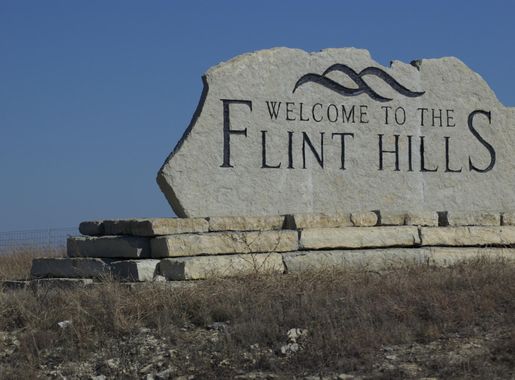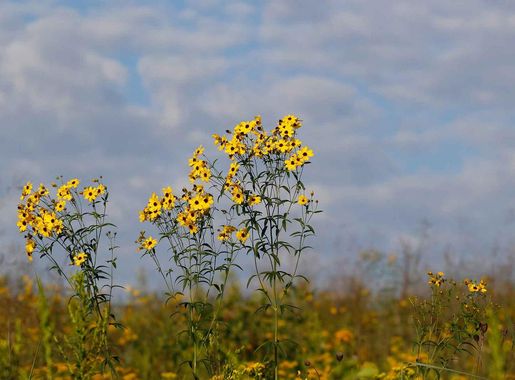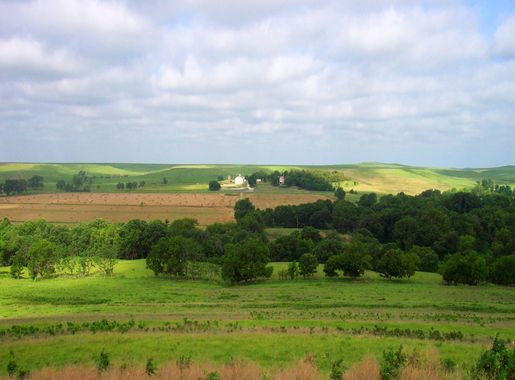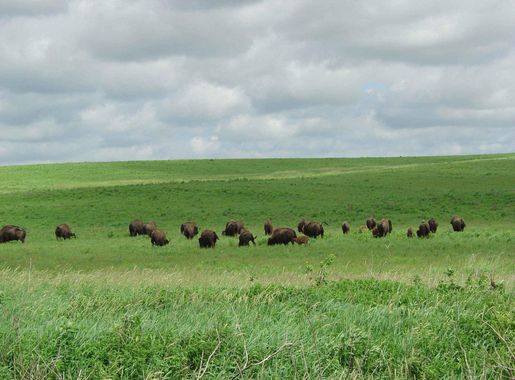
Tallgrass Prairie National Preserve: Kansas' Hidden Gem of Nature
Discover the serene beauty and rich history of Tallgrass Prairie National Preserve, a rare ecosystem in Kansas offering diverse wildlife, scenic trails, and historic landmarks.
Tallgrass Prairie National Preserve is a unique destination in the heart of Kansas, offering a rare glimpse into one of the most endangered ecosystems in North America. Here, visitors can experience the beauty and tranquility of over 10,000 acres of tallgrass prairie, which once covered the vast majority of the Midwest. Stroll along the many trails that wind through the preserve, where you'll encounter a variety of wildlife, including bison, deer, and an array of bird species. The preserve is also home to a rich tapestry of native plants that change with the seasons, making every visit a new adventure. The Tallgrass Prairie National Preserve is not just about natural beauty; it also provides a window into the past. The historic ranch house and barn, dating back to the 1880s, offer a glimpse into the lives of early settlers who once called this prairie home. Join a guided tour to learn more about the history and significance of this remarkable landscape. Whether you're an avid hiker, a history buff, or simply looking for a peaceful escape, the Tallgrass Prairie National Preserve promises a memorable experience. With its wide-open skies and sweeping vistas, this destination captures the true essence of the American heartland.
Local tips in Tallgrass Prairie National Preserve
- Visit in the spring or fall for the best weather and most vibrant prairie scenery.
- Wear sturdy walking shoes and bring plenty of water; the trails can be long and remote.
- Check out the visitor center for maps, exhibits, and guided tour schedules.
- Don't miss the bison herd; they are often seen grazing in the preserve.
- Pack a picnic and enjoy it in the designated areas with scenic views.
Tallgrass Prairie National Preserve: Kansas' Hidden Gem of Nature
Tallgrass Prairie National Preserve is a unique destination in the heart of Kansas, offering a rare glimpse into one of the most endangered ecosystems in North America. Here, visitors can experience the beauty and tranquility of over 10,000 acres of tallgrass prairie, which once covered the vast majority of the Midwest. Stroll along the many trails that wind through the preserve, where you'll encounter a variety of wildlife, including bison, deer, and an array of bird species. The preserve is also home to a rich tapestry of native plants that change with the seasons, making every visit a new adventure. The Tallgrass Prairie National Preserve is not just about natural beauty; it also provides a window into the past. The historic ranch house and barn, dating back to the 1880s, offer a glimpse into the lives of early settlers who once called this prairie home. Join a guided tour to learn more about the history and significance of this remarkable landscape. Whether you're an avid hiker, a history buff, or simply looking for a peaceful escape, the Tallgrass Prairie National Preserve promises a memorable experience. With its wide-open skies and sweeping vistas, this destination captures the true essence of the American heartland.
When is the best time to go to Tallgrass Prairie National Preserve?
Unmissable attractions to see
OZ Museum
Discover the enchanting world of 'The Wizard of Oz' at the OZ Museum in Wamego, Kansas, a whimsical journey for fans of all ages.

Bazaar Cattle Pens
Explore the heart of Kansas ranching culture at the Bazaar Cattle Pens, a unique tourist attraction celebrating the American West.
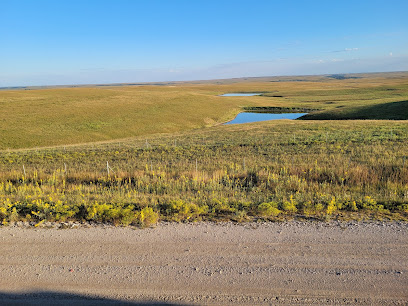
Konza Prairie Biological Station
Experience the breathtaking beauty of Konza Prairie Biological Station, a serene nature preserve showcasing the vibrant tallgrass prairie ecosystem.
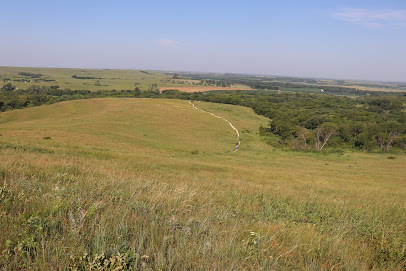
Sunset Zoo
Experience the enchanting wildlife and educational adventures at Sunset Zoo in Manhattan, Kansas - a perfect destination for families and nature lovers.
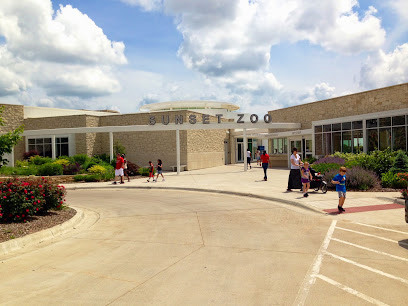
Chase Lake Falls Trail
Explore the breathtaking beauty of Chase Lake Falls Trail, a serene hiking area and nature preserve in Cottonwood Falls, Kansas, perfect for all outdoor enthusiasts.
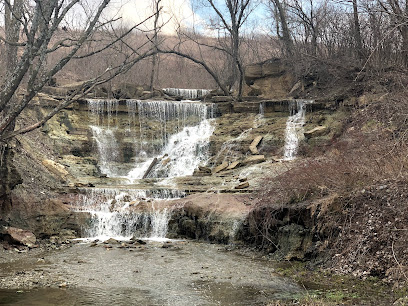
Chase Lake Falls
Experience the breathtaking beauty of Chase Lake Falls in Cottonwood Falls, Kansas – a serene natural wonder perfect for all nature lovers.
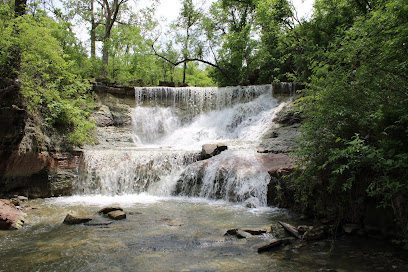
Strong City Park
Discover the serene beauty of Strong City Park in Kansas, a perfect getaway for relaxation, recreation, and nature exploration.
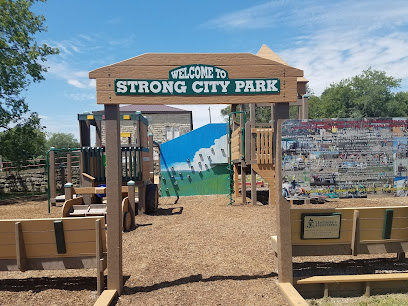
Fox Creek School
Immerse yourself in the educational history of rural America at Fox Creek School, a charming museum in Strong City, Kansas.
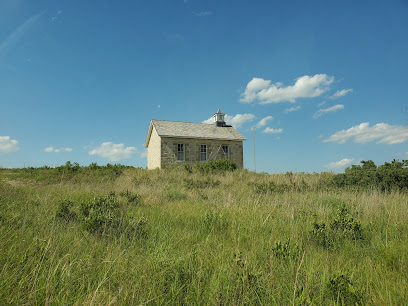
Chase County Historical Society & Museum
Explore the fascinating history and geology of Chase County at the Chase County Historical Society & Museum, a unique tourist attraction in Cottonwood Falls, Kansas.
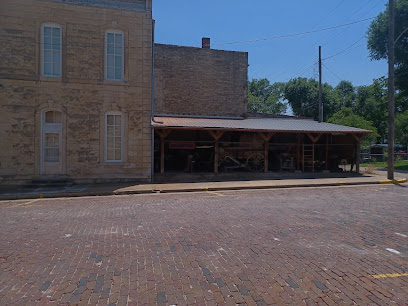
Roniger Memorial Museum
Discover the rich heritage of Cottonwood Falls at the Roniger Memorial Museum, showcasing local history through engaging exhibits and artifacts.
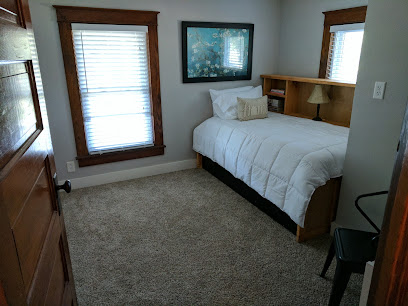
Prather Creek
Explore Prather Creek Wildlife Park in Cottonwood Falls, KS - a tranquil wildlife haven for nature lovers and outdoor enthusiasts.
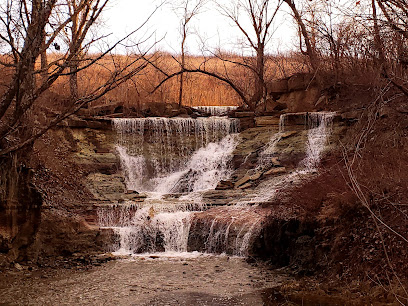
Spring Hill Ranch House
Explore the rich history and serene beauty of Spring Hill Ranch House, a historical landmark in Kansas that captures the essence of early American life.

Kaw Indian Memorial
Discover the serene hiking trails and rich heritage at Kaw Indian Memorial in Council Grove, Kansas, a perfect blend of nature and history.
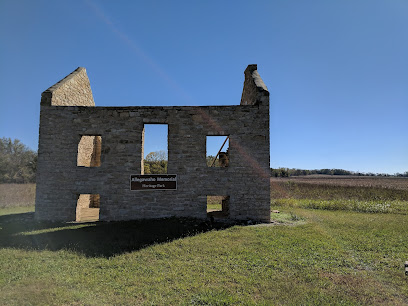
Flint Hills Gallery
Discover Flint Hills Gallery: An artistic haven showcasing the beauty of Kansas through local art and engaging community events.
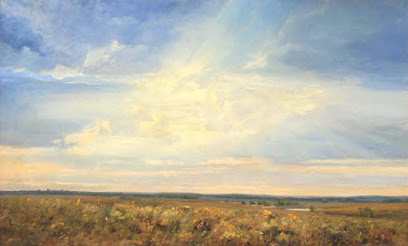
Flint Hills Tallgrass Prairie Preserve
Explore the breathtaking landscapes and rich biodiversity of Flint Hills Tallgrass Prairie Preserve, a true gem of Kansas’s natural heritage.
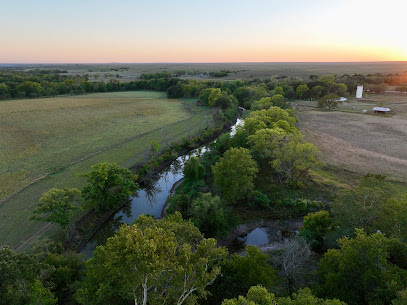
Essential places to dine
Twin Peaks
Experience the ultimate sports bar at Twin Peaks in Wichita - where American cuisine meets lively entertainment in a welcoming atmosphere.
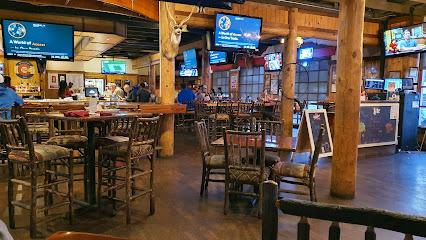
Prairiefire
Explore Prairiefire: A Unique Shopping Mall Blending Retail Therapy with Fun Activities in Kansas.
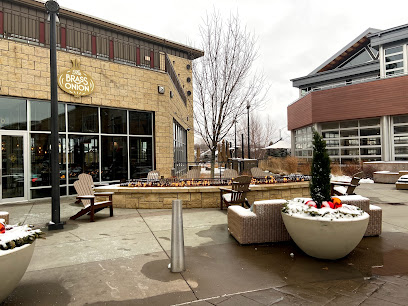
Tallgrass Tap House
Experience the rich flavors of local craft beers paired with gourmet dishes at Tallgrass Tap House in Manhattan, Kansas.
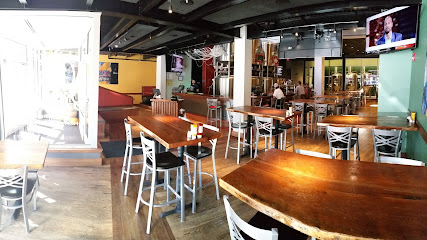
Redrock Canyon Grill - Wichita
Experience the best of American cuisine at Redrock Canyon Grill in Wichita - where flavor meets hospitality in a warm setting.
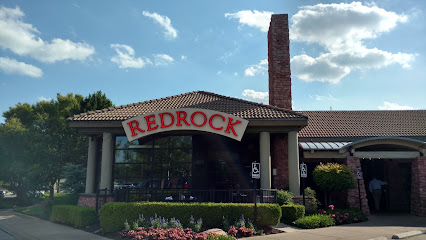
Redrock Canyon Grill
Experience exquisite American cuisine at Redrock Canyon Grill - where every meal becomes a memorable occasion amidst vibrant surroundings.
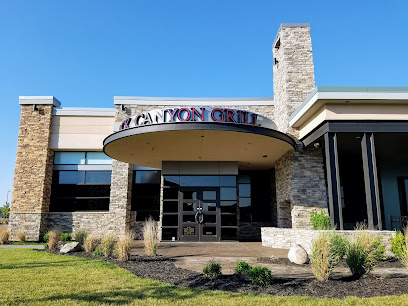
Pinstripes
Discover the perfect blend of dining and entertainment at Pinstripes in Overland Park - where delicious cuisine meets fun activities.

Rock & Brews
Discover Rock & Brews: Where Craft Beer Meets Delicious Food in Overland Park's Vibrant Brewpub Scene.
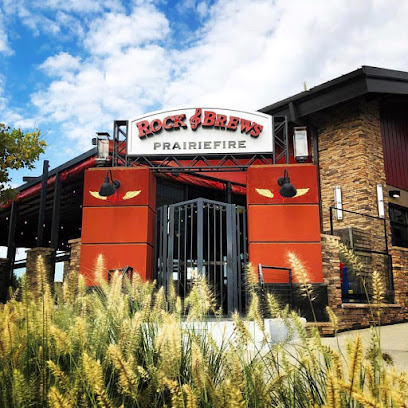
Cafe Trio
Experience the best of American cuisine at Cafe Trio in Kansas City—where fine dining meets vibrant atmosphere.
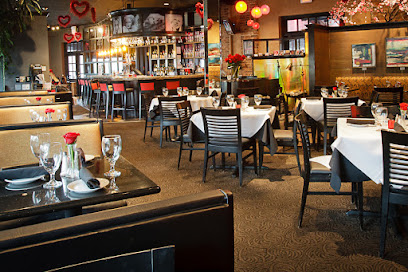
Bonefish Grill
Discover fresh seafood delights at Bonefish Grill in Leawood – where every bite is crafted with care and flavor.
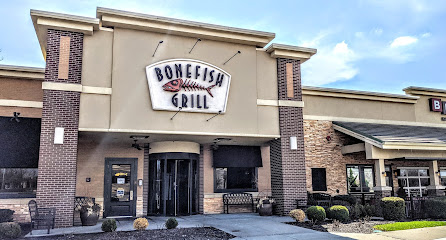
YaYas Euro Bistro in Overland Park
Discover culinary delights at YaYas Euro Bistro in Overland Park - where American meets French and Mediterranean flavors in a cozy setting.
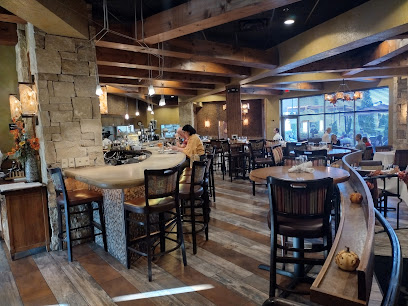
Museum at Prairiefire
Explore art, science, and culture at the Museum at Prairiefire – a unique destination in Overland Park perfect for all ages.
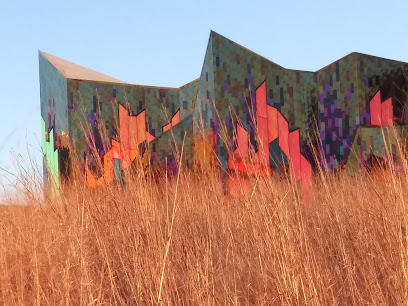
Tallgrass Prairie National Preserve
Experience Kansas' stunning tallgrass prairie ecosystem at Tallgrass Prairie National Preserve - a unique blend of nature and history.

Jason's Deli
Experience fresh flavors and hearty meals at Jason's Deli in Wichita - perfect for families and travelers seeking delicious dining.
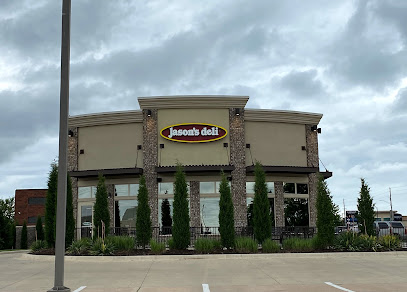
Talk of the Town Grill & Bar
Experience delicious American cuisine and vibrant nightlife at Talk of the Town Grill & Bar in Leawood – perfect for foodies and sports fans alike!

Meddys
Discover authentic Mediterranean flavors at Meddys in Prairie Village - where fresh ingredients meet warm hospitality.
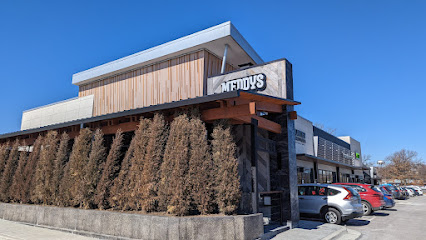
Markets, malls and hidden boutiques
Tallgrass Prairie National Preserve
Discover the stunning beauty of Tallgrass Prairie National Preserve, a serene haven in Kansas showcasing rich wildlife and breathtaking landscapes.
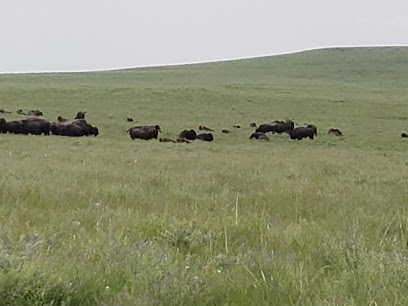
Shops At Tallgrass
Explore the vibrant Shops At Tallgrass, Wichita's premier shopping destination offering diverse retail and dining experiences for all.

Ray's Apple Market
Explore the delightful flavors of Ray's Apple Market, where fresh produce, delicious baked goods, and local specialties await in Council Grove, KS.

Flint Hills One Stop
Discover convenience and hospitality at Flint Hills One Stop, your essential truck stop in the picturesque Flint Hills of Kansas.
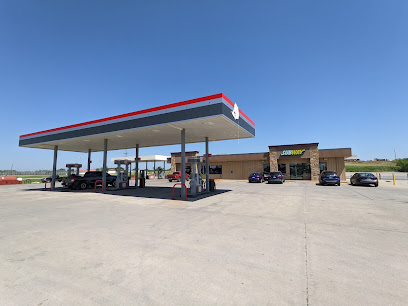
Tallgrass Antiques
Uncover hidden gems and unique vintage treasures at Tallgrass Antiques in Cottonwood Falls, Kansas, a must-visit for collectors and history buffs alike.
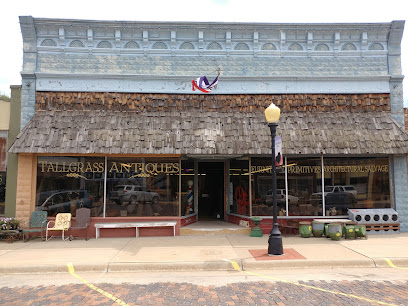
Rerun Consignments & Antique Mall
Explore Rerun Consignments & Antique Mall in Council Grove, KS, for unique antiques and local treasures that reflect the charm of yesteryears.
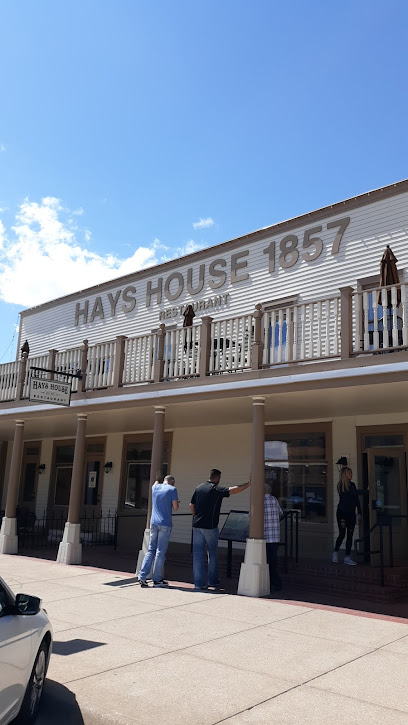
Clark Farm & Home Store True Value
Explore Clark Farm & Home Store in Strong City, your go-to hardware destination for DIY projects and home improvement supplies in Kansas.
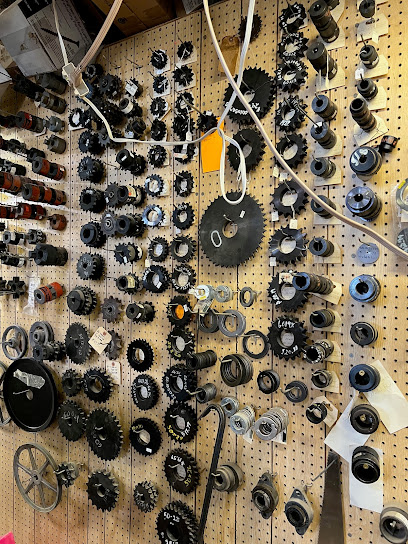
Community Thrift Store
Explore the Community Thrift Store: A treasure trove of vintage finds and unique bargains in Council Grove, Kansas.
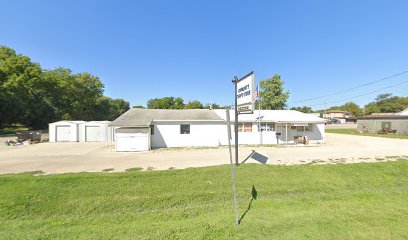
Prairie PastTimes Arts & Crafts
Explore unique handcrafted treasures at Prairie PastTimes Arts & Crafts in Cottonwood Falls, Kansas - a must-visit gift shop for creative souvenirs.

Reyer's Country Store
Explore Reyer's Country Store in Strong City, KS - A top spot for quality animal feed and exceptional community service.
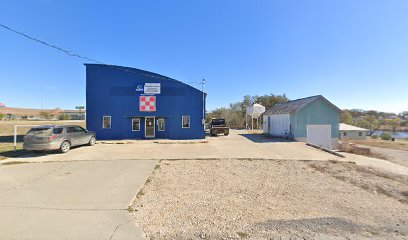
the Vintage Bulldog
Explore The Vintage Bulldog for unique antiques and vintage finds in Cottonwood Falls, Kansas. A must-visit for collectors and history lovers!
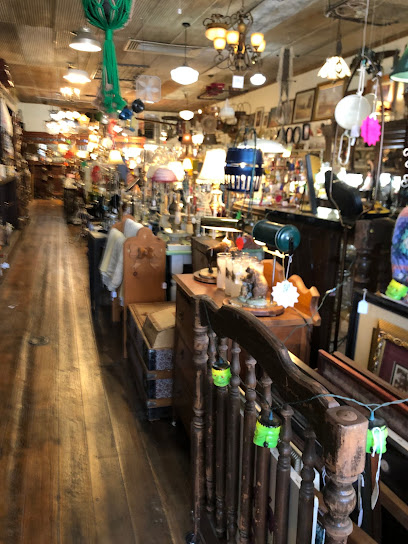
Jim Roberts & Son
Explore Jim Roberts & Son in Cottonwood Falls, KS, for quality Western apparel, denim, hats, and a taste of authentic cowboy culture.
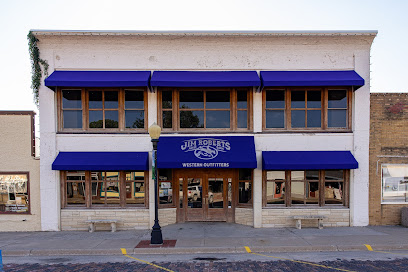
Aunt Bee's Floral Garden Center & Gifts
Discover the vibrant beauty of Aunt Bee's Floral Garden Center & Gifts, where exquisite flowers meet unique gifts in Marion, Kansas.
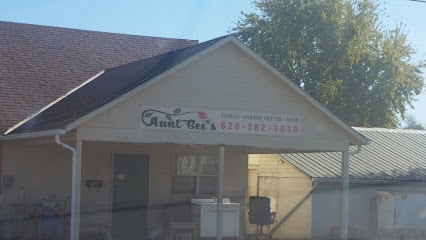
Tallgrass Wine & Spirits
Explore an exquisite selection of wines and spirits at Tallgrass Wine & Spirits, the heart of Strong City's beverage scene.
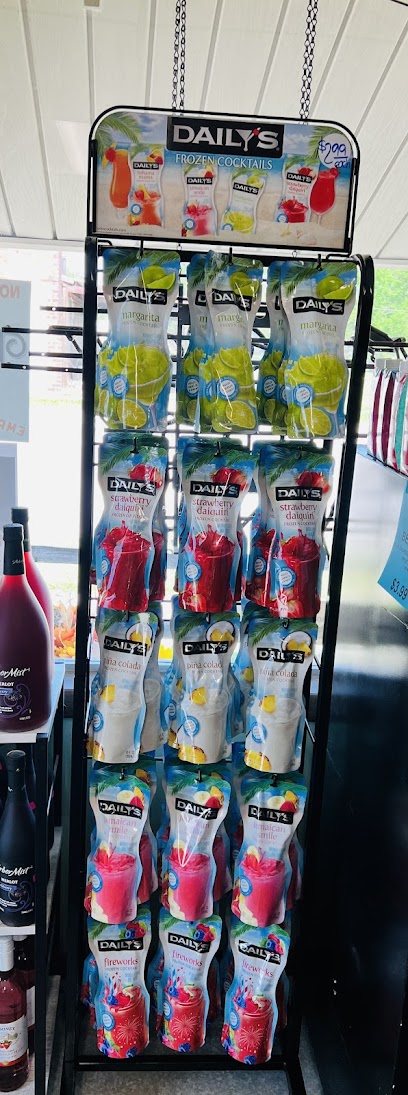
The Wooden Spoon CG
Discover unique gifts and delicious local snacks at The Wooden Spoon CG in Council Grove, Kansas, a charming gift shop experience awaits.
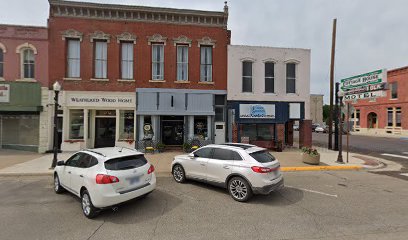
Essential bars & hidden hideouts
Carriage Crossing Restaurant and Bakery
Experience the heart of Yoder at Carriage Crossing Restaurant and Bakery, where delicious comfort food meets delightful baked goods in a cozy setting.
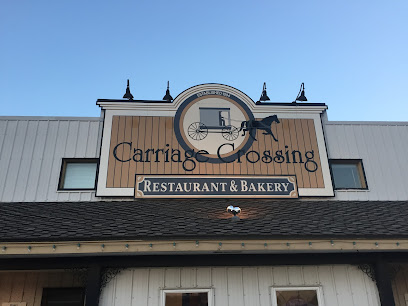
Up-Down KC
Discover Up-Down KC, a lively arcade bar in Downtown Kansas City offering classic games, craft beers, and a vibrant atmosphere for all ages.
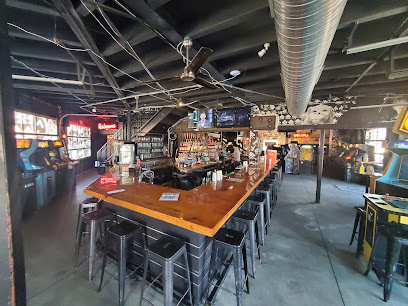
Tallgrass Tap House
Discover the vibrant flavors of Tallgrass Tap House, where craft beer meets delicious gastropub cuisine in a welcoming atmosphere.
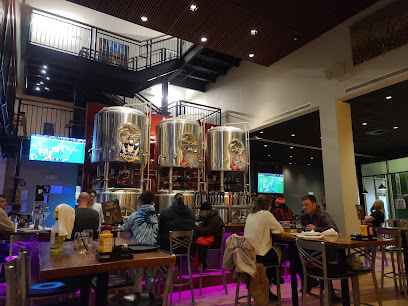
Pizza Ranch
Experience the ultimate buffet with delicious pizzas and fried chicken at Pizza Ranch in Emporia, Kansas - a family favorite for hearty meals.
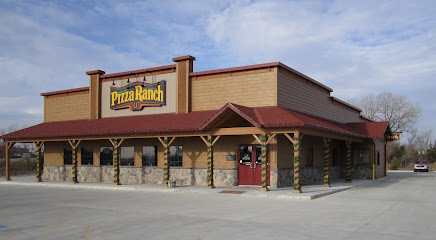
BobbyD's Merchant St BBQ
Experience authentic American barbecue at BobbyD's Merchant St BBQ in Emporia, Kansas, where every bite tells a story of tradition and flavor.

Ad Astra Steakhouse
Discover the best steakhouse experience in Strong City, Kansas, with expertly crafted dishes and a welcoming atmosphere that delights every palate.
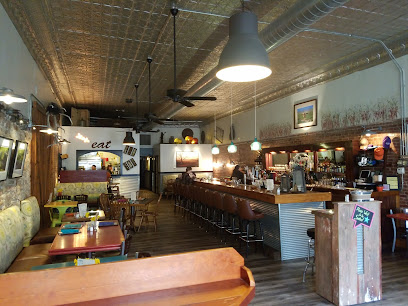
Flying Horse Taproom
Experience the vibrant atmosphere and delicious American cuisine at Flying Horse Taproom in South Kansas City, a true delight for food and drink lovers.

Grand Central Hotel & Grill
Discover the charm of Cottonwood Falls at Grand Central Hotel & Grill, your cozy retreat with delightful dining and warm hospitality.

Clover Cliff Ranch Bed & Breakfast
Discover tranquility at Clover Cliff Ranch Bed & Breakfast, a scenic haven in Kansas, perfect for relaxation and adventure amidst nature's beauty.
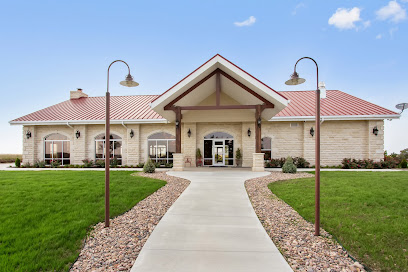
Oak & Steel
Discover the best of Kansas City's craft beer scene at Oak & Steel, a lively beer hall with unique brews and a welcoming atmosphere.

Jacalito Mexican Restaurant
Experience authentic Mexican flavors at Jacalito Mexican Restaurant in Strong City, Kansas, where every bite is a culinary fiesta.

Subway
Discover fresh, made-to-order sandwiches at Subway in Herington, Kansas - a perfect stop for tourists seeking quick and healthy dining options.

Gambino's Pizza
Savor the flavors of Gambino's Pizza in Marion, KS, where delicious pizza and chicken wings meet family-friendly dining.

The Bar Prairie Village
Experience the best of American cuisine at The Bar Prairie Village, where grilled specialties meet a vibrant atmosphere in Kansas.
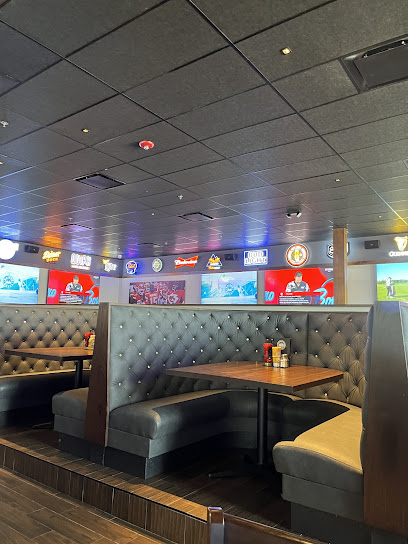
Kansas Scenic View
Discover the stunning landscapes of Kansas Scenic View - a picturesque spot in Cottonwood Falls offering breathtaking views of the Flint Hills.
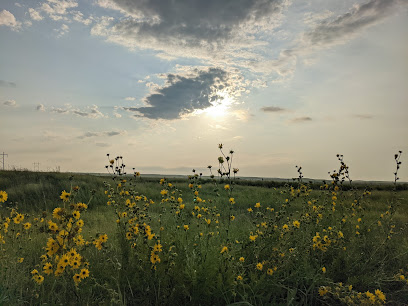
Local Phrases about Tallgrass Prairie National Preserve
-
- HelloHowdy
[hah-dee] - GoodbyeSo long
[soh lawng] - YesYep
[yep] - NoNope
[nohp] - Please/You're welcomePlease/You're welcome
[pleez/yur wel-kuhm] - Thank youThank ya
[thank yah] - Excuse me/SorryPardon me
[pahr-dn mee] - How are you?Howdy
[hah-dee] - Fine. And you?Fine. And you?
[fahyn. and yoo?] - Do you speak English?Ya speak English?
[yah speek ing-glish?] - I don't understandI don't get ya
[ahy dohnt get yah]
- HelloHowdy
-
- I'd like to see the menu, pleaseI reckon I'll take a gander at the menu, please
[ahy rek-uhn ayl take uh gan-der at thuh menu, pleez] - I don't eat meatI don't eat meat
[ahy dohnt eet meet] - Cheers!Skol!
[skohl] - I would like to pay, pleaseI'd like to settle up, please
[ahy'd like to set-l up, pleez]
- I'd like to see the menu, pleaseI reckon I'll take a gander at the menu, please
-
- Help!Help!
[help!] - Go away!Git!
[jit!] - Call the Police!Call the Sheriff!
[call thuh sher-iff!] - Call a doctor!Call the doc!
[call thuh dahk!] - I'm lostI'm turned around
[ahy'm turnd a-round] - I'm illI'm feelin' poorly
[ahy'm feel-in poor-lee]
- Help!Help!
-
- I'd like to buy...I reckon I'll buy...
[ahy rek-uhn ayl bahy...] - I'm just lookingI'm just lookin'
[ahy'm just look-in'] - How much is it?How much fer that?
[how muhch fur that?] - That's too expensiveThat's too steep
[thats tooh steep] - Can you lower the price?Can ya knock it down some?
[can yah nok it down suhm?]
- I'd like to buy...I reckon I'll buy...
-
- What time is it?What's the hour?
[whats thuh ow-er?] - It's one o'clockIt's one o'clock
[its wuhn oh-klok] - Half past (10)Half past (10)
[haf past (10)] - MorningMornin'
[morn-in'] - AfternoonAfternoon
[af-ter-noon] - EveningEvenin'
[ee-ven-in'] - YesterdayYest'day
[yest-day] - TodayToday
[toh-day] - TomorrowTomorry
[toh-mor-ree] - 11
[wuhn] - 22
[too] - 33
[three] - 44
[for] - 55
[five] - 66
[six] - 77
[seven] - 88
[ate] - 99
[nine] - 1010
[ten]
- What time is it?What's the hour?
-
- Where's a/the...?Where's a/the...?
[wheres a/the...?] - What's the address?What's the address?
[whats thuh ad-dress?] - Can you show me (on the map)?Can you show me (on the map)?
[can yah show mee (on thuh map)?] - When's the next (bus)?When's the next (bus)?
[whens thuh nekst (bus)?] - A ticket (to ....)A ticket (to ....)
[ah tik-it (to ....)]
- Where's a/the...?Where's a/the...?
History of Tallgrass Prairie National Preserve
-
Millions of years ago, the central United States was covered by a shallow sea. As the sea receded, it left behind rich soils that gave rise to one of the most fertile and diverse grassland ecosystems in the world—the tallgrass prairie. This environment became home to a variety of plants, animals, and indigenous cultures, each adapting uniquely to the landscape.
-
For thousands of years, the tallgrass prairie was inhabited by Native American tribes, including the Kansa, Osage, and Pawnee. These tribes relied on the prairie for hunting bison, gathering medicinal plants, and sustaining their way of life. Their deep connection to the land is evident in the cultural artifacts and oral histories passed down through generations.
-
In the early 19th century, European explorers and settlers began to venture into the tallgrass prairie. The Lewis and Clark Expedition of 1804-1806, commissioned by President Thomas Jefferson, marked one of the first major explorations into this region. Following the Louisiana Purchase, settlers moved westward, attracted by the promise of fertile land.
-
The Homestead Act of 1862 played a crucial role in shaping the tallgrass prairie. This legislation allowed American citizens to claim 160 acres of public land in exchange for a small fee and the commitment to improve the land by building a dwelling and cultivating crops. This led to a significant influx of settlers and the conversion of prairie land into farmland.
-
By the late 19th century, cattle ranching had become a dominant industry on the tallgrass prairie. Ranchers utilized the vast grasslands for grazing, and iconic ranches such as the Spring Hill Ranch, now part of the Tallgrass Prairie National Preserve, were established. These ranches played a critical role in the local economy and culture.
-
In response to the significant loss of tallgrass prairie due to agricultural development, conservation efforts began in the late 20th century. In 1996, the Tallgrass Prairie National Preserve was established through a partnership between The Nature Conservancy and the National Park Service. The preserve aims to protect and restore this unique ecosystem, offering a glimpse into the prairie’s natural and cultural history.
-
Today, the Tallgrass Prairie National Preserve spans over 10,000 acres and serves as a living museum of prairie history. Visitors can explore a variety of trails, historic buildings, and cultural sites, and participate in educational programs that highlight the significance of the prairie’s biodiversity and heritage. The preserve stands as a testament to the ongoing efforts to protect and celebrate this vital American landscape.
Tallgrass Prairie National Preserve Essentials
-
Tallgrass Prairie National Preserve is located in the Flint Hills region of Kansas, approximately 90 miles northeast of Wichita and 85 miles southwest of Topeka. The closest major airport is Wichita Dwight D. Eisenhower National Airport (ICT). From the airport, you can rent a car and drive to the preserve, which takes about 1.5 to 2 hours. Alternatively, you can fly into Kansas City International Airport (MCI) and drive approximately 2.5 to 3 hours to reach the preserve.
-
Once at Tallgrass Prairie National Preserve, the best way to explore is by car. The preserve has well-maintained roads and parking areas at key locations. There are also several hiking trails that allow for exploration on foot. For a more immersive experience, guided bus tours are available seasonally, providing insights into the prairie ecosystem and history. Bicycling is allowed on designated routes, and horseback riding is permitted on specific trails.
-
The official currency in the United States is the US Dollar (USD). Credit and debit cards are widely accepted at visitor centers, gift shops, and nearby businesses. It is advisable to carry some cash for smaller establishments and for use in areas with limited card payment facilities. ATMs are available in nearby towns such as Strong City and Cottonwood Falls.
-
Tallgrass Prairie National Preserve is generally a safe destination for tourists. However, it is important to stay on marked trails and be aware of your surroundings, especially when hiking. Wildlife encounters are possible, so maintain a safe distance from animals. There are no specific high-crime areas targeting tourists, but it is always wise to secure your belongings and avoid leaving valuables in your car.
-
In case of emergency, dial 911 for immediate assistance. The visitor center staff can assist with minor injuries and emergencies. It is advisable to have travel insurance that covers medical emergencies. For non-urgent health issues, the nearest medical facilities are in Cottonwood Falls, approximately 10 miles away. Always carry a basic first-aid kit and stay hydrated, especially during the hot summer months.
-
Fashion: Do wear comfortable, weather-appropriate clothing and sturdy hiking shoes. Avoid wearing flip-flops or open-toed shoes on trails. Religion: The preserve is not affiliated with any religious practices, so no specific religious customs need to be observed. Public Transport: Public transport is limited, so plan to use a car for travel within the area. Greetings: A friendly wave or a simple 'Hello' is common and appreciated. Eating & Drinking: Do bring plenty of water and snacks, especially for longer hikes. Avoid leaving any trash behind; pack out what you pack in.
-
To experience Tallgrass Prairie National Preserve like a local, try visiting during early morning or late afternoon for the best wildlife sightings and photography opportunities. Participate in ranger-led programs and guided tours to gain deeper insights into the history and ecology of the prairie. Don't miss the chance to visit the historic Spring Hill Ranch House and Barn, which provide a glimpse into the area's ranching heritage. For a unique perspective, consider a visit during the annual bison roundup in the fall.
Nearby Cities to Tallgrass Prairie National Preserve
-
Things To Do in Manhattan
-
Things To Do in Salina
-
Things To Do in Topeka
-
Things To Do in Wichita
-
Things To Do in Hutchinson
-
Things To Do in Kansas City
-
Things To Do in Bartlesville
-
Things To Do in Independence
-
Things To Do in Joplin
-
Things To Do in Enid
-
Things To Do in Tulsa
-
Things To Do in Stillwater
-
Things To Do in Lincoln
-
Things To Do in Broken Arrow
-
Things To Do in Sedalia

